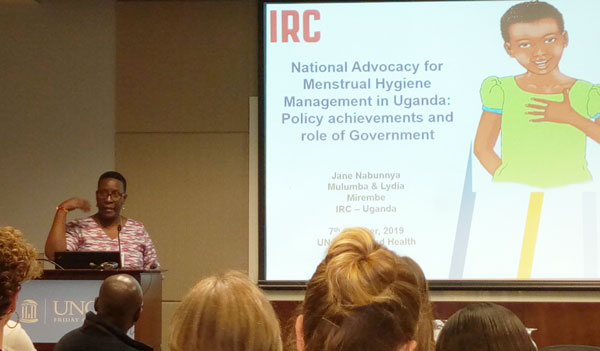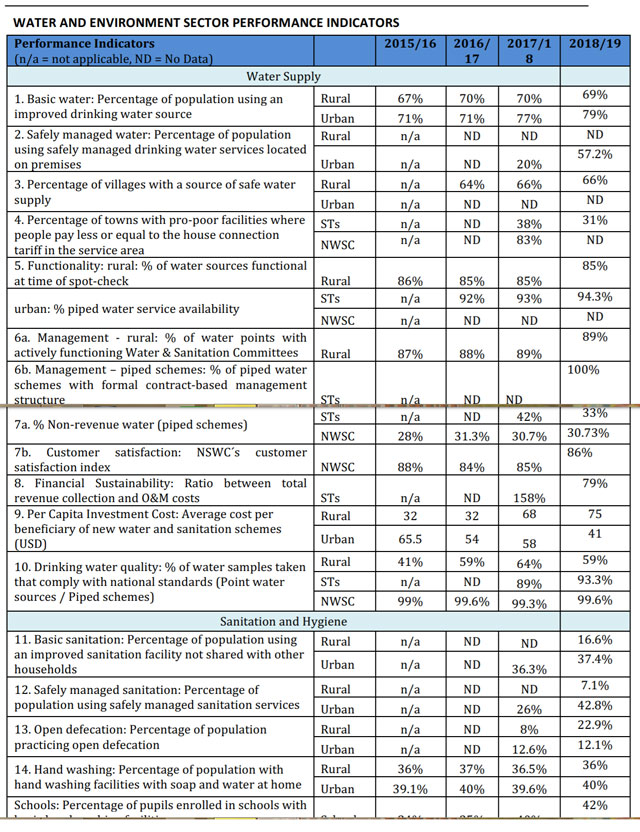
Kampala, Uganda | THE INDEPENDENT | Uganda is one of 115 countries that are already taking firm steps to achieving Sustainable Development Goal 6 (SDG 6), that have been surveyed by the 2018/2019 UN-Water Global Analysis and Assessment of Sanitation and Drinking-Water (GLAAS) survey.
The GLASS survey report, together with other water, health and sanitation issues, will be among many issues on the agenda of the ongoing World 2019 Water and Health Conference at the University of North Carolina (UNC) October 7-11.
Uganda is well represented at the world conference by several sector actors, who will discuss interventions in WASH (Water, sanitation and hygiene ) and announce a Call to Action for Rural Sanitation.
About half of the 115 countries surveyed, Uganda inclusive, have set targets that aim for universal WASH coverage by 2030. The survey shows that there are numerous examples of governments specifically targeting open defecation, which will have a dramatic impact on public and environmental health.
The University of North Carolina conference will explore drinking water supply, sanitation, hygiene and water resources around the world, and put strong emphasis on public health. The cross-cutting themes for this year’s conference are Humanitarian WASH, WASH financing and markets, climate variability and water security, evidence-based WASH, and WASH and environmental health.
Focus will also be on how to create robust institutions, able to deliver reliable and accessible water, sanitation and hygiene (WASH) services. The key, experts say, is to take a systems approach.
Dr Tedros Adhanom Ghebreyesus, the Director General World Health Organisation and Gilbert Houngbo, UN-Water Chair and President of the International Fund for Agricultural development, in a foreword to the survey, said “perhaps the critical finding of this report is that national governments are increasingly recognizing the importance of having a fully functioning delivery system. Many report that they are unable to implement policies and plans because they lack human and financial resources. They tell us that institutions tasked with regulatory oversight are often stretched. Detailed reporting and data are rare.”
GLAAS (see full report page 3, bottom) is produced by the World Health Organization (WHO) on behalf of UN-Water. It provides a global update on the policy frameworks, institutional arrangements, human resource base, and international and national finance streams in support of sanitation and drinking-water. It is a substantive input into the activities of Sanitation and Water for All (SWA).
✳ Uganda Water sector performance 2019

Ugandan case studies
Uganda’s water and sanitation figures have steadily been improving in the past decade (see UGANDA Water and Environment Sector Performance Report 2019 page 3, bottom).
According to Uganda’s Sector Report , as of June 2019, the percentage of the rural population using an improved water source was estimated at 69% (compared to 70% in FY 2017/18). During the year under review the rural population increased by an estimate of 993,766 persons yet the new water supply interventions covered 50% of the population increase.
Access to safe drinking water in urban areas has increased to 79.1% (up from 74%) of the urban population (in large and small towns, and Rural Growth Centres using improved drinking water sources compared to 77% in June 2018. The water and sanitation services managed by National Water & Sewerage Corporation (NWSC) have now expanded to cover a total of 253 towns.
 The Independent Uganda: You get the Truth we Pay the Price
The Independent Uganda: You get the Truth we Pay the Price



